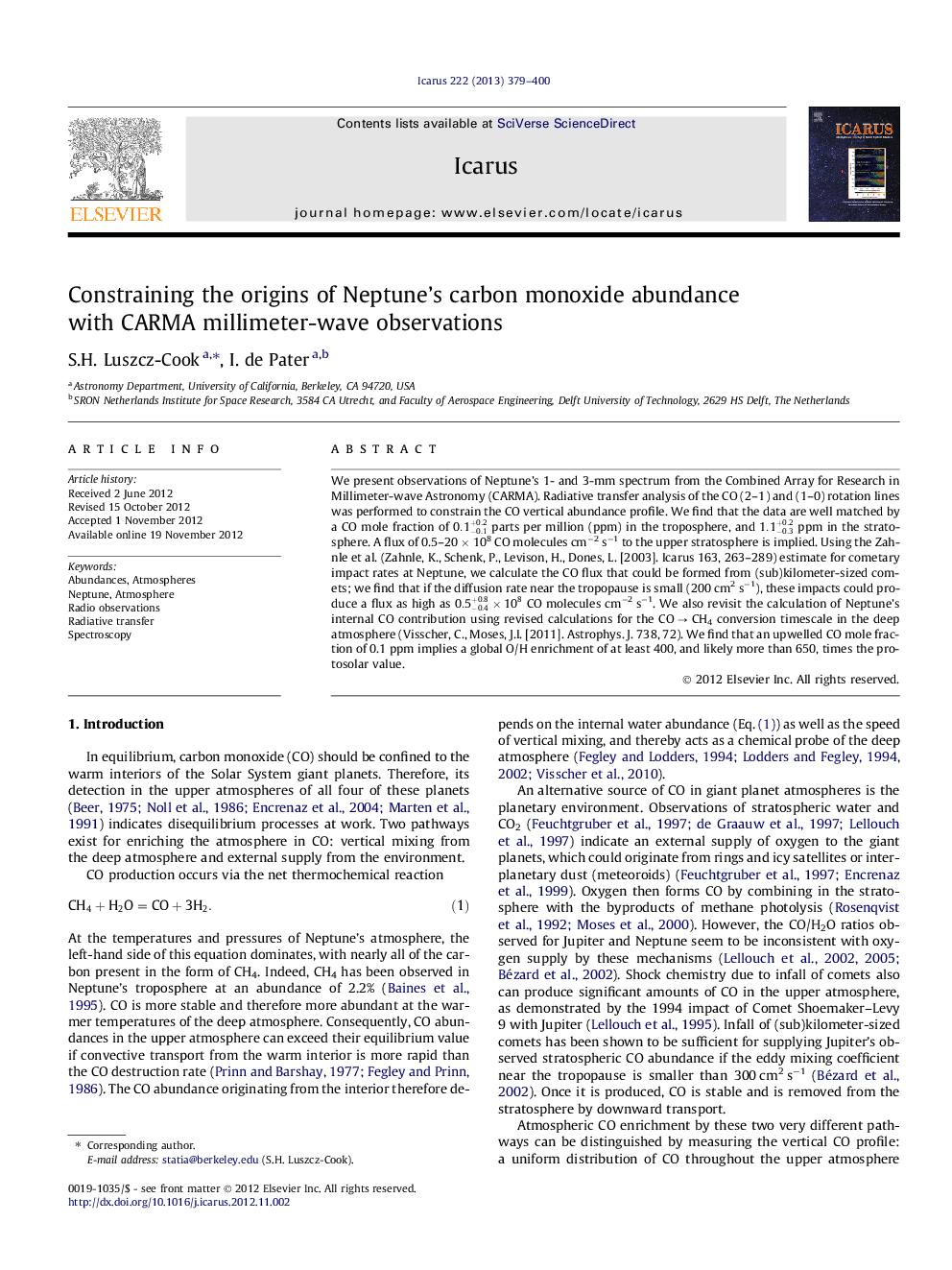| کد مقاله | کد نشریه | سال انتشار | مقاله انگلیسی | نسخه تمام متن |
|---|---|---|---|---|
| 1773743 | 1021144 | 2013 | 22 صفحه PDF | دانلود رایگان |

We present observations of Neptune’s 1- and 3-mm spectrum from the Combined Array for Research in Millimeter-wave Astronomy (CARMA). Radiative transfer analysis of the CO (2–1) and (1–0) rotation lines was performed to constrain the CO vertical abundance profile. We find that the data are well matched by a CO mole fraction of 0.1-0.1+0.2 parts per million (ppm) in the troposphere, and 1.1-0.3+0.2 ppm in the stratosphere. A flux of 0.5–20 × 108 CO molecules cm−2 s−1 to the upper stratosphere is implied. Using the Zahnle et al. (Zahnle, K., Schenk, P., Levison, H., Dones, L. [2003]. Icarus 163, 263–289) estimate for cometary impact rates at Neptune, we calculate the CO flux that could be formed from (sub)kilometer-sized comets; we find that if the diffusion rate near the tropopause is small (200 cm2 s−1), these impacts could produce a flux as high as 0.5-0.4+0.8×108 CO molecules cm−2 s−1. We also revisit the calculation of Neptune’s internal CO contribution using revised calculations for the CO → CH4 conversion timescale in the deep atmosphere (Visscher, C., Moses, J.I. [2011]. Astrophys. J. 738, 72). We find that an upwelled CO mole fraction of 0.1 ppm implies a global O/H enrichment of at least 400, and likely more than 650, times the protosolar value.
► We observed Neptune in the CO (2–1) and (1–0) rotational lines.
► We derive new estimates of Neptunes stratospheric and tropospheric CO mole fractions.
► 0.1 ppm of CO in the troposphere implies an O/H ratio at least 400 times protosolar.
► Infall of (sub)kilometer-sized comets could supply the observed stratospheric CO.
Journal: Icarus - Volume 222, Issue 1, January 2013, Pages 379–400